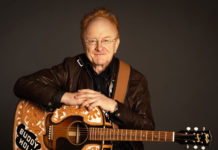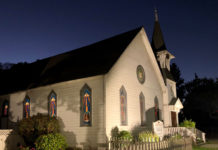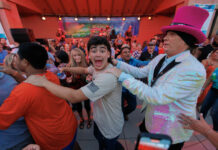The Roman Catholic Church established a formal procedure to declare holy men and women as “saints” in the 16th century. Since then, some 921 people have received this coveted title. Previously, however, sainthood depended on various local processes, so no one knows the exact total number of Catholic saints who have been canonized.
When asked to rank various saints according to popularity, different websites have placed St. Francis of Assisi as high as No. 4. This should not seem surprising to residents of the Bay Area, where so many institutions are named after him, nor of California, where his followers founded the chain of historic missions.
Recognizing the high regard in which Francis and his followers, the Franciscans, are held, San Jose’s St. Stephen’s in the Field Episcopal Church presented a free lecture, “A Guided Tour in Franciscan Spirituality,” attracting more than 50 guests on a Friday night. Two authorities from the Franciscan School of Theology in Berkeley told about the history of the Franciscan religious order, its rule of life, and what it is like to live today as a secular (non-monastic) Franciscan or a Franciscan Brother or Sister.
The Rev. Ken Wratten, Rector of St. Stephen’s, explained, “We live in contentious times; many of us long for the means to deepen our spiritual awareness and our relationship with God. This evening provides a guided tour by highly qualified experts into the spiritual traditions which have transformed thousands of lives over the past 800 years.”
Noted scholar and retreat-leader Brother Bill Short, offered a brief history:
Giovanni Pietro Bernardone was born in 1181 to a wealthy Italian family. Something of a playboy, he went off to war, was captured by the enemy and then ransomed by his family. Soon he prepared to set off for the Fourth Crusade, but changed his mind because of a fateful dream. In it God told him to return home. He began to spend time in prayer while living in a cave. One day he met a leper whom he kissed, passing a test of selfless love from God.
Soon he had another dream in which God told him to “Repair my church,” and he began the laborious task of restoring a ruined church building at San Damiano using donated stones. He started preaching to obey God and gathered a small band of followers who lived the simple life Francis exemplified. In 1209, he traveled to Rome where the Pope gave him permission for his Order. In 1212, St. Clare received permission to found a companion women’s order, the Poor Clare’s. Over the centuries there has developed a large family of related orders: male, female, Catholic, Lutheran and Anglican.
Donna Foley is director of Spiritual Formation at FST where she accompanies graduate students as they pray, study and work. She is a secular Franciscan who seeks to live the precepts of Francis outside a monastery. She talked about how the Franciscan rule of life can guide people to the kind of lives they want to live and how poverty can lead to simplicity of life that affords more freedom to worship and serve God.
She also told stories from the life of Francis illustrating his concern about all creation, an understanding that foreshadowed our present ecology movement.
Father Wratten ended the evening with remarks about spiritual growth. He hopes to provide more opportunities for Christians to be introduced to other kinds of exercises that help them make connections with God and discern meaning and purpose in life.
Chuck Flagg is a retired teacher with a passion for religion. Reach him at cf****@**********rs.com.







